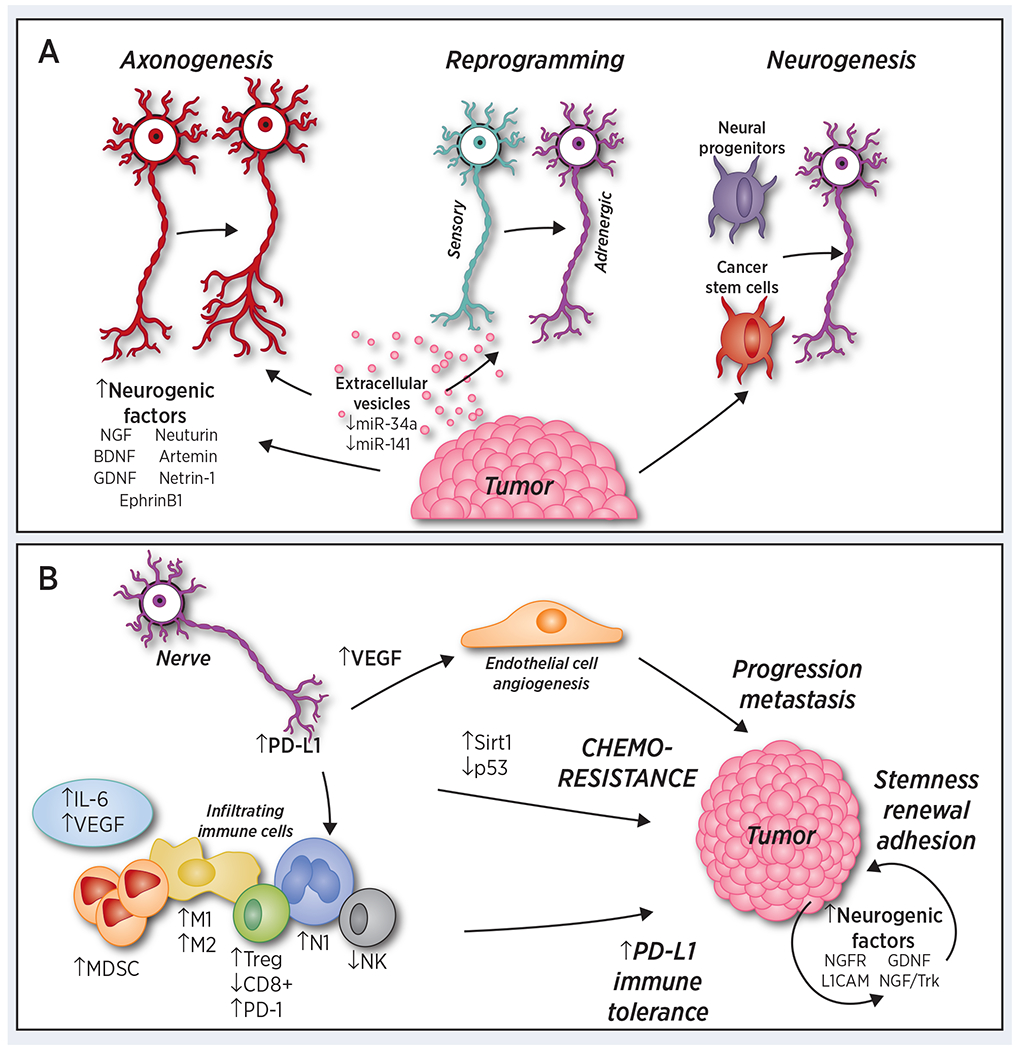Figure 1.

A) Cancer cells drive nerve alteration. Cancer signals to induce nerve growth and innervation through multiple mechanisms. Cancer-induced axonogenesis includes the secretion of numerous neurogenic factors, axon-guidance molecules, and extracellular vesicles containing increased levels of axonal guidance molecules. Neural reprogramming occurs through extracellular vesicles containing orchestrated levels of miR-34a and miR-121, transforming a sensory nerve into an adrenergic nerve. Finally, cancer communicate with distant organs to recruit neural progenitor cells to initiate neurogenesis, while cancer stem cells drive de novo neurogenesis. B) Sympathetic innervation promotes the tumor microenvironment and tumor growth. Sympathetic signaling induces an angiogenic switch through increased vascular endothelial growth factor (VEGF) levels and the induction of aerobic glycolysis. It also promotes the infiltration of CD11b+F4/80+, FoxP3+ Tregs, and myeloid-derived suppressor cells (MDSCs). It stimulates the secretion of interleukin (IL)-6 and decreases the numbers of CD8+ cells and natural killers (NK) cells. It participates in a tumor-type dependent M2-type/M1-type macrophage shift and N2-type/N1-type neutrophil shift. Sympathetic nerves also express protein programmed cell death-1 (PD-1) in some cancer types, potentially contributing to immune suppression. In addition, sympathetic signaling drive chemoresistance via p53-dependent Sirt1 signaling among other mechanisms, and expression of neurogenic ligands and receptors on tumor cells promote stemness and self-renewal within the tumor.
